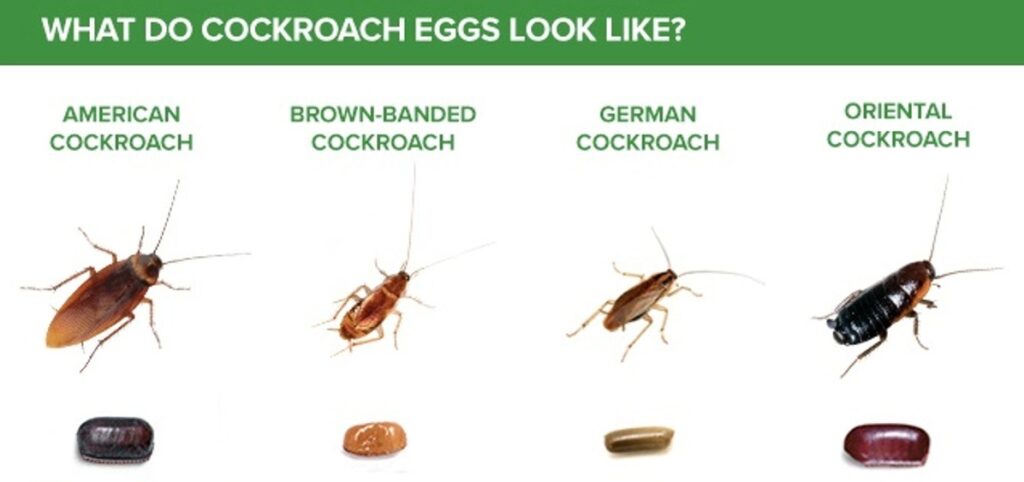Have you ever wondered how do cockroach eggs look like? These tiny, often hidden oothecae can be a sign of a larger problem. Understanding their appearance is crucial for effective pest control.
Cockroach eggs are typically small, oval-shaped, and can vary in color. They are usually found in clusters, making them difficult to spot. Knowing what to look for can help you take action before an infestation grows.
In this article, we'll guide you through the characteristics of cockroach eggs and provide tips on identifying them. Stay informed to keep your space pest-free.
Curious about how do cockroach eggs look like? Join us as we explore their fascinating features and what they mean for your home.
Table of Contents
ToggleGeneral Characteristics of Cockroach Eggs
Physical Characteristics
- Color: Cockroach eggs are typically brown or tan, although shades may vary, with some appearing reddish or dark brown. This coloration helps them blend into their surroundings, providing camouflage against predators.
- Shape and Size: Oothecae are generally elongated and oval-shaped, resembling small capsules. They typically measure between 5 to 10 millimeters in length, roughly the size of a small grain of rice. The surface is often smooth and shiny, sometimes showing fine lines or ridges that give a segmented appearance.
Structure and Composition
Each ootheca contains multiple individual eggs, usually ranging from 10 to 50 or more, depending on the species. The eggs are arranged in rows within the egg case, which is surrounded by a protective proteinaceous substance that hardens over time, forming a robust casing.
The egg case is designed to protect developing embryos from environmental factors and physical damage, ensuring a higher survival rate.
Reproductive Behavior
Female cockroaches typically produce one ootheca a month for several months, with some species capable of laying multiple cases per week during peak reproductive periods. After mating, females may carry the ootheca for a few days before depositing it in sheltered locations near food sources. They often use a glue-like secretion to attach the egg case securely to surfaces.
Hatching Process
Incubation periods for cockroach eggs can vary based on environmental conditions such as temperature and humidity. Upon hatching, nymphs emerge that closely resemble miniature adult cockroaches but lack wings and reproductive organs. The nymphs undergo several molts before reaching maturity.
These characteristics highlight the adaptability and reproductive efficiency of cockroaches, contributing to their success as a species in various environments.
Cockroach Eggs Species Characteristics
German Cockroach (Blattella germanica)
- Size and Shape: Approximately 1/4 inch (6-7 mm) long; elongated and segmented.
- Color: Light brown or tan, may appear slightly translucent when fresh.
- Casing Texture: Smooth with a prominent seam along its length.
- Attachment Sites: Typically found in hidden areas like cracks in kitchens and bathrooms.
- Reproduction: A female can produce several oothecae over her lifetime, each containing about 30 to 40 eggs.
American Cockroach (Periplaneta americana)
- Size and Shape: About 3/8 inch (8-10 mm) long; larger than other common species.
- Color: Dark brown to reddish-brown, often with a glossy appearance.
- Casing Texture: Smooth and purse-shaped.
- Attachment Sites: Commonly deposited in humid areas like basements or utility rooms, sometimes glued to surfaces with a secretion.
- Reproduction: Females lay around 16 eggs per ootheca and can produce multiple oothecae throughout their lifecycle.
Oriental Cockroach (Blatta orientalis)
- Size and Shape: Approximately 3/8 inch (8-10 mm) long; rounded shape.
- Color: Dark brown to black.
- Casing Texture: Rough and textured, lacking a prominent seam.
- Attachment Sites: Often found in damp locations such as basements and crawl spaces.
Brown-Banded Cockroach (Supella longipalpa)
- Size and Shape: Less than 1/4 inch (5-6 mm) long; smaller than German cockroach eggs.
- Color: Light brown with tan or yellowish tint.
- Casing Texture: Smooth texture, making them more visible as they are often attached to surfaces.
- Attachment Sites: Typically found in warmer indoor environments.
Frequently Asked Questions - FAQ'S
Q. How can I prevent cockroach eggs from hatching?
A. To prevent cockroach eggs from hatching, maintain cleanliness by removing food and water sources. Use insect growth regulators to disrupt reproduction and apply desiccants like diatomaceous earth to kill existing eggs effectively.
Q. Where do cockroaches typically lay their eggs?
A. Cockroaches typically lay their eggs in dark, warm areas such as behind appliances, under sinks, and inside cabinets. They prefer locations near food and moisture to ensure the survival of their young.
Q. What are the best methods to get rid of cockroach eggs?
A. The best methods to eliminate cockroach eggs include vacuuming visible egg casings, using disinfectants, and applying targeted insecticides that specifically kill both adult cockroaches and their eggs.
Q. How long do cockroach eggs take to hatch?
A. Cockroach eggs generally take about three to six weeks to hatch, depending on environmental factors like temperature and humidity, which can influence the incubation period significantly.
Q. Can cockroach eggs survive in cold temperatures?
A. Cockroach eggs can survive in cold temperatures but are vulnerable to extreme conditions. Most will not survive prolonged exposure to temperatures below 50°F (10°C), which can be fatal for many species.
Q. How can I effectively identify cockroach eggs in my home?
A. To identify cockroach eggs, look for small, oval-shaped casings called oothecae, which are typically brown or black and found in hidden areas like cracks, crevices, and dark corners of your home.
Q. What are the common hiding spots for cockroach eggs?
A. Common hiding spots for cockroach eggs include kitchen cabinets, under sinks, behind appliances, inside walls, and other dark, undisturbed areas where they can remain concealed from view.
Q. How long does it take for cockroach eggs to hatch?
A. Cockroach eggs usually hatch within three to six weeks after being laid, with the exact time depending on environmental conditions such as warmth and humidity levels surrounding the egg casings.
Q. What are the differences in egg casings between various cockroach species?
A. Different cockroach species produce distinct egg casings; for instance, German roach oothecae are light brown and smooth, while American roach casings are larger and turn black shortly after being laid.
Q. How many eggs can a female cockroach lay in her lifetime?
A. A female cockroach can lay between 300 to 400 eggs in her lifetime, typically producing several egg cases containing around 30-40 eggs each during her reproductive cycle.







